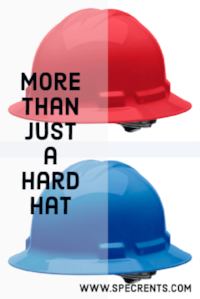In many ways, it's part of a worker's identity. They wear this every day. Some people like to keep collecting stickers to show the numerous jobs they've been on while others like to have theirs kept as clean as possible. I'm personally somewhere in between. It's a hard hat. But it's mine- so I like to keep it in good shape but I want it to look a little dirty so I don't stand out so much!
Some companies provide their employees with hard hats in a certain color or with the company logo, making it easier to identify the team members. I know a lot of guys take pride in who they work with so providing them with one can go a long way to show employees their employer cares (even though technically OSHA says employers are required to provide them).
A happy medium for companies might be having "plain old white ones" for new employees giving them a colored and/or logo'd one after a couple of months (or whatever time period works). This would also help to identify the "green" employees- not to pick on them- but to help team members keep an eye on them and provide mentorship. After all, new employees get injured at a much higher rate and we all know that turn-over for these employees is slightly higher too, so it's in everyone's best interest to help them out. Plus, if they find it's to hard and walk off with your hard hat, at least it was the cheaper one.
All-in-all, hard hats are more than just a hard hat. And Spec Rents can help you whether you want the Plain Jane white ones or a colored one with a logo. Either way, you'll have a quality hard hat at a great price. Contact us for your quote today.
Post by: Elizabeth "Liz" Graves, Sales Manager at Spec Rents, LLC. Contact Liz at lizg@specrents.com





